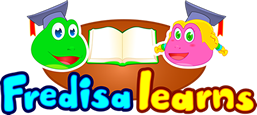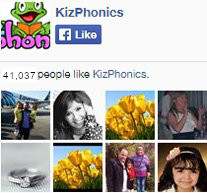Unleashing the Magic of Word Families in Phonics Education
In the enchanting realm of phonics education, word families play a pivotal role in shaping a child's linguistic journey. As a cornerstone of early language development, understanding word families can be likened to uncovering the secrets of a magical code. This article delves into the world of word families, their significance, and how they contribute to the growth of young learners. Let's embark on this captivating linguistic adventure together.
Table of Contents:
• Introduction
• What are Word Families?
• Exploring the Power of Word Family Rhymes
• Word Families in Kindergarten: Building Strong Foundations
• Unlocking the Benefits of Word Families
• Fact Section: FAQs about Word Families
• Conclusion
Introduction: Cracking the Phonics Code with Word Families
In the symphony of language acquisition, phonics education acts as a conductor, guiding young minds to comprehend and create words. Within this symphony, word families take center stage, offering a harmonious path to understanding word patterns and their relationships.
What are Word Families?
Word families, also known as phonograms or rimes, are groups of words that share a common phonetic pattern. These words have the same combination of letters at the end and a similar sound. By recognizing and exploring these patterns, children can decode unfamiliar words more easily and develop reading fluency.
For instance, consider the "at" word family: cat, hat, bat, rat. All these words end with the same "-at" sound and share a phonetic bond. Exploring such patterns helps children become more confident readers.
Exploring the Power of Word Family Rhymes
Rhyming is a delightful aspect of language that appeals to children's natural sense of rhythm and sound. Word family rhymes take this appeal to a higher level by showcasing how changing the initial consonant can create new words within the same family.
For example, in the "at" word family, substituting the initial letter results in "mat," "pat," and "sat." This playful exploration not only enhances vocabulary but also nurtures an understanding of how words are formed.
Word Families in Kindergarten: Building Strong Foundations
Kindergarten is a pivotal phase in a child's educational journey, and word families become valuable companions in this adventure. Teachers and parents can introduce word families to kindergarteners as a playful exploration, weaving them into engaging activities and stories.
By integrating word family activities into kindergarten curricula, educators provide young learners with a solid foundation for decoding words and developing essential literacy skills.
Unlocking the Benefits of Word Families
The magic of word families extends beyond their ability to engage children in playful learning. Let's uncover the key benefits they bring to the table:
1. Enhanced Phonemic Awareness:
Word families promote phonemic awareness, helping children distinguish and manipulate sounds within words. This skill is crucial for reading and writing proficiency.
2. Improved Reading Fluency:
Understanding word patterns through word families allows children to read more fluently. Once they recognize a pattern, they can apply it to multiple words.
3. Vocabulary Expansion:
Word families expose children to a variety of words sharing the same phonetic structure. This exposure broadens their vocabulary and encourages them to explore new words within familiar patterns.
4. Confidence Boost:
As children successfully read and identify words within a word family, their confidence in reading grows. This positive reinforcement fuels their enthusiasm for learning.
5. Seamless Decoding:
By mastering word families, children develop decoding skills that enable them to read new words independently. This skill is essential for tackling unfamiliar words.
Fact Section: FAQs about Word Families
Q1: How can I teach word families effectively?
A1: Incorporate word family activities such as word sorts, puzzles, and rhyming games. Reading word family stories and engaging in hands-on projects can also make learning more interactive.
Q2: At what age should I introduce word families?
A2: Word families can be introduced as early as preschool, but they are particularly valuable in kindergarten and the early elementary years.
Q3: Are word families suitable for struggling readers?
A3: Yes, word families can be beneficial for struggling readers. They provide a structured approach to decoding words and building confidence.
Q4: Can word families be applied to different languages?
A4: Yes, the concept of word families can be adapted to various languages. Each language has its own phonetic patterns that can be explored through similar strategies.
Q5: How do word families relate to sight words?
A5: While word families focus on phonetic patterns, sight words are those that children are encouraged to recognize by sight due to their high frequency and irregular spelling.
Conclusion: Unveiling the Treasure Trove of Word Families
In the enchanting tapestry of phonics education, word families emerge as shining threads that weave the fabric of literacy. Their ability to unlock the doors to reading, vocabulary expansion, and linguistic confidence cannot be underestimated.
As you embark on this journey of phonics and word families, remember that every word family explored is a step closer to unveiling the magic of language. To delve deeper into the world of word families and phonics education, visit Kizphonics.
The adventure of learning awaits, and word families are your steadfast companions along the way. Let curiosity guide you as you uncover the beauty and power of language's hidden patterns.











